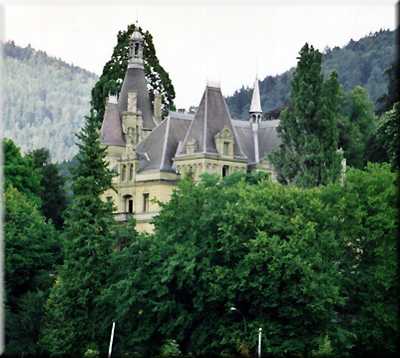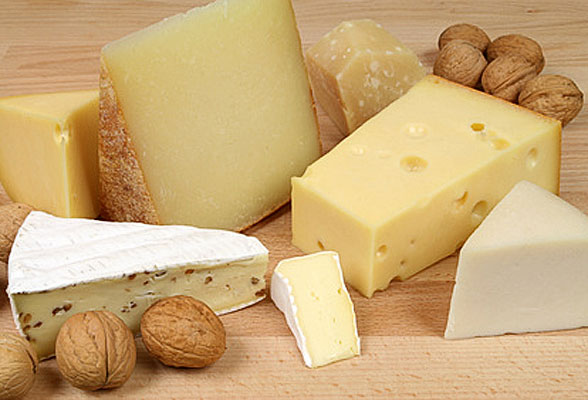 |
| The village of Wilderswil, and beyond |
 |
| Unspunnen Castle |
 |
| Ruins of Rothenfluh |
 |
| Rothenfluh |
Exploring Interlaken and the surrounding area - take a different view on Switzerland's tourist captial!
 |
| The village of Wilderswil, and beyond |
 |
| Unspunnen Castle |
 |
| Ruins of Rothenfluh |
 |
| Rothenfluh |
 |
| Where to, from here? |
 |
| She came home...cow with head dress, Wilderswil |
| Castle Oberhofen from the lake |
 |
| Castle Hünegg |
 |
| Castle of Thun |
 |
| View from the castle tower |
9 September 2011 | 7 pm - 9 pm
| ||
After-dark tours: Bats – silent through the night
| ||
| ||
We meet at the Ballenberg west entrance at 7 pm. The tour ends at 9 pm.
Admission for adults, CHF 10 (children free). Wear good shoes, dress according to weather conditions, and bring a torch (flashlight) or headlamp. In search of the rare horseshoe bat. An evening stroll through the museum with bat expert Peter Zingg. Listen to the nighttime sounds and experience a sense of having gone back to a time without lights or electricity. You’ll also be observing lime burners at their fiery work and learn how stone is brought to white-hot temperatures. |
| www.brienzholzfaellertage.ch The national Vaulting Competition takes place in Interlaken this year from the 10th to the 11th of September at the horse sport center in Matten (Pferdesportcenter, Feldgässli 100), - never heard of vaulting? Simply put, it's gymnastics performed on a moving horses back and if you have never seen this sport performed before, here's your chance and certainly an event not to be missed.http://en.wikipedia.org/wiki/Equestrian_vaulting Also on the 10th of September is annual the Chäs-Chilbi, or Cheese Market in Lehn, Unterseen. Buy alpine cheese from Habkertal and from the Iselten and Sefinen alps, hear some authentic yodelling and dance to the music of the accordions of the Oergelifründe from Sumiswald. 20th of September: September is also the month, when quite literally, the cows come home. Having marched their way up to the mountains in July, its time to head back down. Although many places will have a market or a festival day to mark the occaision, not all of them will be listed - be sure to ask at the local tourism office for "Alpabzug". Otherwise, be in Suldtal, in Aeschi bei Speiz on the 20th of September. Although it's an all day event, with a market, cheese selling and other attractions, be there by 2pm to see the procession of cows and their herdsmen. Failing that, the Sichlete Festival or Harvest Festival in the city of Bern on the 12th of September. |
 |
| When the cows left home... |
| WEEKLY EVENTS IN SEPTEMBER Tuesdays: Carve your own cow - Fuchs Hozschnitzkurse, Hofstetten. From 6pm to 7pm. Contact Brienz Tourism for reservations. 033 952 8080 Tuesday Market, 8am -5pm, Jungfraustrasse, Interlaken Wedensdays: Guided tour of the violin makers school, Brienz. 5pm. Contact Brienz Tourism, for reservations and details - 033 952 80 80. The last tour for this season will be on the 21st of September. Guided tour of the village of Brienz. 9.30am, in Brienz, meeting point is at the railway station. An interesting walk through this lovely lakeside village, not to be missed. Contact Brienz Tourism for details and reservations. 033 952 80 80 |

No idea what to do today?
Here's a list of upcoming events for the Interlaken and Brienz region.
5th and the 26th – Schloss Interlaken: Middle Ages dinner with theatre performance. Not your everyday supper either: food is served on wooden boards, drinks in earthenware mugs and you only get a spoon. Bring your own knife if you want, but forks are not allowed! Sign up ahead of time at: http://www.mittelalteressen-interlaken.ch/termine.htm or at the Tell Spiel in Interlaken. The evening costs CHF 98.- per person, but it is certainly a dinner you will never forget!
6th – if you like to get up early, then here's the deal for you: the Wanderexpress to the Brienzer Rothorn. Leaving Brienz at 5 am, a perfect adventure for those who want to see the mountains waking up – call 033 952 22 22 for reservations (possible until 12:00 noon the day before). The trip will only be possible if the weather is good, so it's wise to ask when reserving.
Every Tuesday:
Folklore evening on the lake promenade in Brienz, from 8pm, entrance is free.
Want to try your hand at wood carving? Every Tuesday, from 6pm to 7.30pm Fuchs Holzschnitz in Hofstetten let you try your skills. Call Brienz Tourism 033 952 80 80 for more information and reservations.
Tuesday Market on Jungfraustrasse Interlaken from 8am to 5pm. A diverse market with interesting wares, worth a browse.
Every Wednesday:
From the 10th of August: Guided tour of the Violin makers school in Brienz, 5pm. Call Brienz Tourism for more information: 033 952 80 80.
Guided tour of the village of Brienz. 9.30 – 11.30 am, meeting point is Brienz railway station. This two hour tour will give you a different view of this pretty lake side village, and is certainly worth taking time for. Call Brienz Tourism for more information: 033 952 80 80
The air force base at Unterbach opens its doors to visitors every Wednesday from 2pm, an interesting look behind the doors of one of Switzerland's alpine military bases. . Call Brienz Tourism for more information and reservations: 033 952 80 80
Until the 31st of August, Wednesdays – Heimatwerk Interlaken (Höheweg 115) is having a demonstration of bobbin lace making, from 3pm to 6pm. Bobbin lace making was once a common task in rural Switzerland but has sadly witnessed a decline in the past century but it has recently seen a revival of interest in this age old tradition. See history at work!
Every Thursday:
Ever wondered what a farmer does when the cows come home? Here's your chance to find out. From 4pm, the Heiniger farm shows you the work they do and gives you a chance to meet some of their animals. For reservations call, Brienz Tourism for more information: 033 952 80 80
Every Saturday and Sunday, the Lama Ranch Brienz takes visitors on a lama trekking tour into the mountains. There are 2 hour and 2 day tours on offer contact www.lama-ranch-brienz.ch for more information.